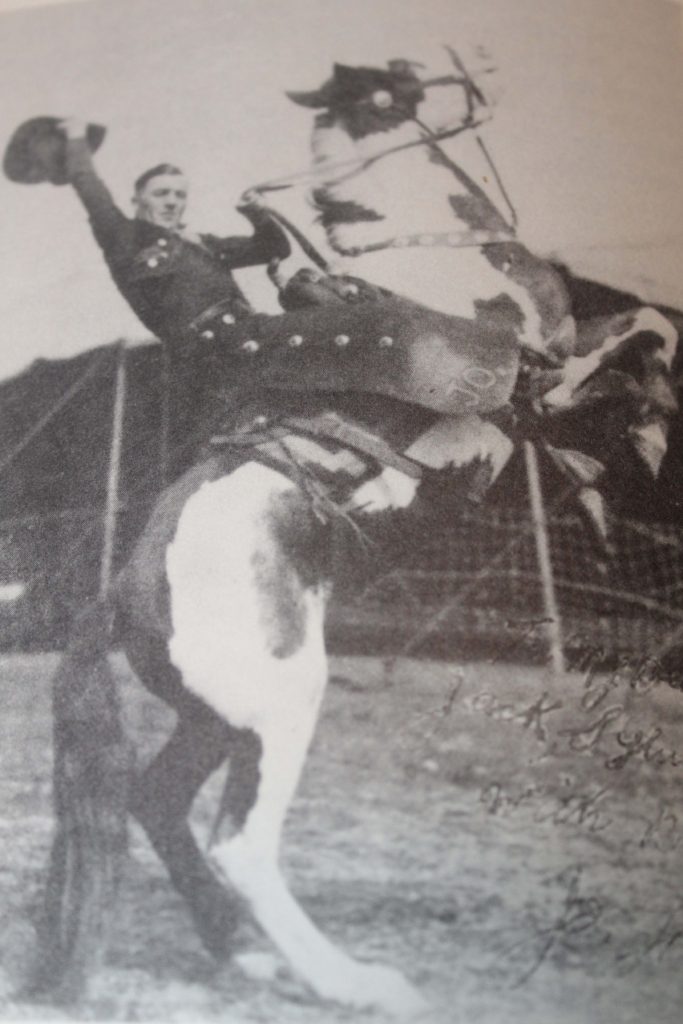
Cowboys are a dying breed, they say. Modern technology is replacing the need for the cow hand to work with his horse and lariat. Yet, we still have a lot of working ranches in the Copper Corridor and cowboys and cowgirls still help keep the old west traditions alive. Cowboy culture is still a part of the southwest from country music to rodeos.
Oracle and the lower San Pedro River Valley have a long history of cattle ranching and farming. From Redington to Aravaipa and along the Gila River and Winkelman, these hardworking cattlemen and farmers built successful ranches and farms. A number of the ranches produced outstanding cowboys who along with being cattlemen found time to compete in rodeos around the country. Many of them became well known, winning competitions from the Fiesta de Los Vaqueros/Tucson Rodeo to New York’s Madison Square Garden. Besides producing champion cowboys, some of the ranchers bred outstanding race horses, rodeo stock and helped promote horseracing and rodeos in Arizona.
One such cowboy was Jo Curtis Flieger. Jo Flieger grew up in Canada and learned to ride and care for horses while working on ranches. He soon began competing in and promoting rodeos or “stampedes” as they were known in Canada. He also raised and provided bucking horses for the stampedes. He won the Mountain Race at the Williams Lake Stampede in 1923, ’24 and ’26. This was a dangerous downhill run down a mountain. One year in which Jo raced, 14 riders participated. Only four completed the race. One rider and two horses were killed after falling down the steep mountain trail.
Jo joined a Wild West show in the United States where he drove a stagecoach and did trick riding. The show traveled to places in the southwest and Jo liked the weather and when the Wild West Tour ended in 1929, he found himself in Arizona. He soon found a job working on a ranch in Winkelman. He started his own ranch by the Painted Cave in the Aravaipa area. He and his wife Gussie later bought the Cook’s Lake Farm along the San Pedro.
Jo became well known among ranchers, rodeo people and horse racing fans in Arizona. He helped start organized Quarter Horse Racing in Tucson and was one the founding members of the Southern Arizona Horse Breeder’s Association. Jo began breeding Santa Gertrudis cattle in 1948 and was a charter member and director of the Arizona Santa Gertrudis Association in 1956. His contributions to cattle raising, rodeos, horse racing and western ideals resulted in him being awarded the Chester A. Reynolds Award from the National Cowboy and Western Heritage Museum located in Oklahoma City, Oklahoma. In his later years, he lived in Oracle, dying in 1998.
Another old-time cowboy and an Arizona pioneer in Mammoth, Oracle and Pinal County was Tom Wills. Tom was born in 1866 in Mariposa County, California. He was the son of a successful stock man. He moved to Arizona in 1883 and a year later settled in the lower San Pedro River valley where he soon gained a reputation as a hard worker and a highly skilled cowboy with a rope or horse. He worked most of the ranches in the area and soon had his own ranch near Mammoth.
In 1893, Tom joined the Charlie Meadows Wild America show. This Wild West Show would later be known as Arizona Charlies Wild West Show. Tom would drive an old Concord stagecoach and fight off bandits as part of a re-creation of old stagecoach robberies. He would also compete in the “Cowboy Tournament” riding broncs and steer roping as part of the show. In 1893, he set the world’s record for steer roping which would last until 1901.
At a Wild West show in Tucson in 1894, he rode a man killer bronc that had never been successfully ridden. It became the highlight of the show and was such a brilliant and courageous exhibition of horsemanship that the newspaper called him “the man of San Pedro.” The horse was known to have killed two previous riders by throwing itself on its back and landing on the unfortunate cowboy riding him. It tried this move with Wills but Tom avoided the horse’s body and climbed back up on him as soon as the horse got back on its feet, riding the bucking horse until it gave up.
Tom became a prominent rancher in the Oracle and Mammoth area. He later became the Pinal County Sheriff for two terms and later a County Supervisor. While Sheriff, he competed in a rodeo in Cheyenne, Wyoming. At the time he was known as the “champion roper” of Arizona and New Mexico. He took 2nd place money. In 1910, Tom was elected as Pinal County’s representative to the Arizona Constitutional Convention which set the stage for statehood.
As he got older, he continued to support ranching and rodeos. He was named supervisor of cowboy sports and events for the first Arizona State Fair in 1912. He helped organize and judge rodeos in Prescott and Payson. Tom Wills was one of the first outstanding cowboys from the lower San Pedro River valley.
Author’s Note: I am working on a series of articles about outstanding cowboys and cowgirls along the Copper Corridor. If you know of any from the past or even some who are competing now, including junior rodeo competitions, let me know by sending me their name and any information you have to johnh@minersunbasin.com or post it on the Copperarea Facebook page.
